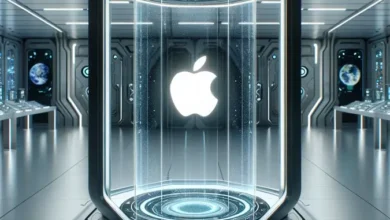How to Boost Website Engagement Using Text to Video Technology
With the rapid evolution of digital marketing, websites face increasing competition to capture and retain users’ attention. Traditional text-based content often lacks the visual appeal that today’s audience expects. Text to video technology is changing the game, providing a fresh, engaging way to connect with visitors and keep them on your website longer. By transforming written content into captivating videos, businesses can boost engagement, improve user experience, and increase conversion rates. Incorporating video content marketing strategies can further enhance your brand’s visibility and impact. Here’s how you can leverage text to video technology to make your website more engaging and user-friendly.
1. Capturing Attention with Visual Appeal
In the digital world, first impressions are crucial. Studies show that visitors decide within seconds if they want to stay on a website or leave. Text to video technology provides an instant visual appeal that can capture this initial attention. Instead of presenting information solely through text, converting key messages into video format allows users to digest information more easily. Videos can highlight essential points visually, making it easier for visitors to understand the content and stay engaged with your brand. This visual impact is a great way to reduce bounce rates and encourage users to explore further.
2. Making Content More Digestible
Modern users are increasingly on-the-go, often multitasking while browsing. Long paragraphs of text can feel overwhelming and may deter visitors from fully engaging with your content. Text to video technology breaks down complex information into bite-sized, easy-to-digest visuals, making it more likely for users to stay on the page. By turning text into video snippets, brands can convey their message in a concise, visually appealing way. For example, summarizing a blog post into a quick 2-minute video enables users to absorb the main ideas without reading every word. This format aligns well with users’ fast-paced consumption habits.
3. Enhancing User Experience with Dynamic Content
Creating a memorable user experience is key to retaining visitors on a website. Static text content, while informative, doesn’t offer the same dynamic experience that videos can provide. Text to video maker technology allows businesses to add engaging, multimedia content that feels interactive and lively. This interactivity can significantly enhance the user experience, encouraging visitors to spend more time exploring the website. Dynamic content like video also tends to perform better in capturing users’ emotions, making the website feel more personalized and appealing.
4. Boosting SEO Through Video Integration
Text to video technology not only benefits user engagement but also improves search engine optimization (SEO). Search engines favor websites with multimedia content, as it suggests a richer user experience. By adding video content to your site, you increase the likelihood of appearing higher in search engine rankings. Google, for instance, often displays video results at the top of search pages, which can drive more traffic to your site. Embedding videos can also increase the average time spent on your website, another SEO metric that signals relevance and quality to search engines.
5. Driving Social Sharing and Audience Reach
When users find content that resonates, they are more likely to share it. Videos are far more shareable than text content alone, allowing your brand to reach a broader audience. By creating videos from text content, you give visitors something worth sharing across social media platforms. These videos can amplify your brand’s message and extend its reach beyond your website. Text to video technology enables you to create engaging content that is suitable not just for your website but for social platforms as well, driving engagement from both organic reach and social shares.
6. Increasing Accessibility and Inclusivity
Text to video technology enhances accessibility by offering content in a format that accommodates various user preferences and needs. Not all visitors are comfortable reading lengthy text, while others may have visual impairments or reading difficulties. Videos, especially those with voiceovers or captions, cater to different audiences and make content more inclusive. By converting text into video, you create an experience that is accessible to everyone, including those with disabilities. This accessibility not only boosts engagement but also aligns with a broader effort toward digital inclusivity.
7. Providing Value with Educational Videos
Many users visit websites for learning and insights, and video is an excellent format for educational content. By transforming text into informative video tutorials or explainer videos, you provide additional value to visitors. For example, a software company could turn its FAQ or user guide into video tutorials, making it easier for users to understand how to use its product. Educational videos not only keep users engaged but also build trust and credibility, as they demonstrate a commitment to helping users make the most of the product or service.
8. Building Brand Storytelling Through Video
One of the most powerful uses of text to video technology is storytelling. A brand’s story is often best conveyed visually, as it can evoke emotions that text alone may not achieve. AI video generator apps enable businesses to turn their brand story, mission, or values into a compelling narrative that resonates with audiences. When users feel an emotional connection to a brand, they are more likely to stay engaged and even convert into loyal customers. Building a story with video is not only engaging but also helps humanize the brand, making it relatable and memorable.
9. Encouraging User Interaction with Call-to-Actions (CTAs)
Videos created from text content can easily incorporate call-to-action (CTA) elements to drive further engagement. Whether it’s encouraging visitors to explore more content, sign up for a newsletter, or complete a purchase, CTAs in video format are highly effective. Adding a CTA at the end of each video can guide users on the next steps, creating a smooth and interactive journey on the website. This interactive approach can lead to higher conversion rates, as users feel directed and informed on what action to take after viewing the video.
10. Analyzing User Behavior and Preferences
Another benefit of text to video technology is the data it provides. Videos embedded on your website allow you to track user behavior and measure engagement more effectively. You can monitor metrics like play rate, completion rate, and interaction rate, which provide valuable insights into what types of content resonate with your audience. These insights can then inform future content strategies, helping you create more of the content that keeps users engaged. Analyzing video performance data helps you continuously optimize your website to better meet user needs.
Conclusion: Making Text to Video Part of Your Strategy
As website engagement becomes a crucial factor for digital success, adopting innovative content formats like text to video can give you a significant advantage. This technology not only captures attention but also caters to various user preferences, improves accessibility, and enhances SEO. By integrating text to video tools into your content strategy, you can transform static text into interactive, shareable, and engaging videos that drive higher user engagement. In a competitive digital landscape, text to video technology can be the key to standing out and connecting with your audience more effectively. Whether you’re looking to boost social shares, improve accessibility, or build a stronger brand connection, text to video is a valuable tool that enhances your website’s engagement potential.



